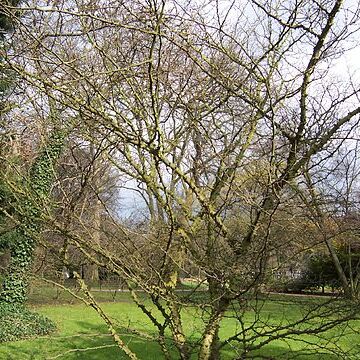Shrubs or small trees. Stems and branchlets with prickles. Young branchlets and leaflet blades abaxially on midvein pubescent, sometimes also secondary veins pubescent, sometimes all parts glabrous. Leaves 5-15-foliolate; rachis winged; leaflet blades sessile or at base of leaf rachis with a short petiolule, opposite, ovate, ovate-elliptic, or lanceolate, 2.5-7 × 1.5-4 cm, adaxially with spines, oil glands numerous, translucent, and slightly protruding when dry, midvein impressed, base slightly oblique, margin crenate, apex acute to mucronate or with a retuse tip. Inflorescences terminal, 1-5 cm. Perianth in 2 irregular series or 1 series, with 5-8 ± undifferentiated tepals. Tepals pale yellowish green, narrowly lanceolate, broadly ovate, or subdeltoid, ca. 2 mm. Male flowers: stamens 5-8(-10); filaments pale green; connective with an oil gland at apex; rudimentary gynoecium pale green. Female flowers: carpels 2 or 3; styles recurved. Fruit follicles reddish brown, ca. 5 mm in diam., base attenuate into a 1-2 mm stipe, oil glands numerous and slightly protruding. Seeds 4-4.5 mm. Fl. Mar-May, fr. Jul-Sep. 2n = ca. 132*.
More
A deciduous tree. It grows 6 m high. It is a broad spreading shape. The bark is grey with cone shaped processes over it. The leaves have leaflets along the stalk. The leaves are 20 cm long and there are about 11 leaflets. They are oval and glossy green. There can be some prickles on the upper surface. The stalk has prickles. The flowers are small and green. They occur in clusters 5 cm across. The fruit are small and round. They are warty and have a strong aroma. They are 5 mm across. They are green and ripen to red. On drying they split open to reveal shiny black seeds. Probably now Zanthoxylum bungeanum.

